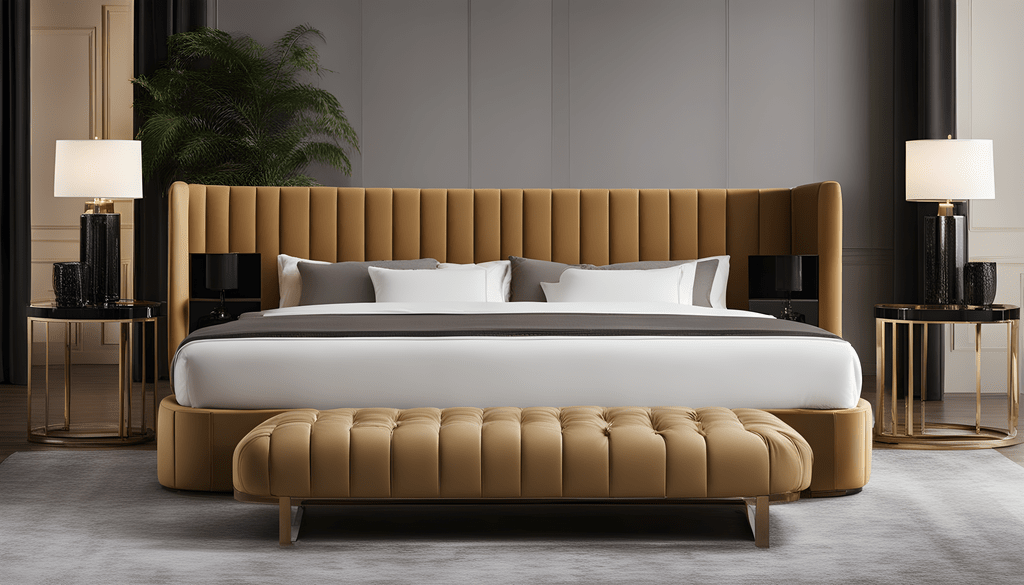Expensive furniture – the unsung hero of our interior design. It’s more than simply a useful place to casually throw away your belongings; it’s a declaration of style, a silent chronicler of your day-to-day existence. The million-dollar question—or, perhaps more accurately, the thousand-dollar question – is this one, though: Is expensive furniture truly worth the money you have saved up?
The Seduction of Swanky Sofas: The Initial Temptation
First, let’s indulge in the luxury sofas that virtually shout sophistication from the other side of the shop. Although they appear as though they were taken directly out of a high-end film, were they really worth the dent in your pocketbook? This debate is comparable to that expensive cup of coffee. Does having a higher price tag make your regular coffee habit feel more opulent? Perhaps. Perhaps not. Furthermore, doesn’t a well-loved, somewhat worn couch have a certain character that makes a room?
Quality vs. Quantity: The Eternal Dilemma
The assurance of exceptional quality is one of the main arguments in favor of spending a lot of money on expensive furniture. And it is true, in a way. Excellent materials, skillful construction, and the guarantee that your couch won’t fall apart after the first movie marathon are all strong arguments. But—and this is a major but—can the typical person really see the difference between a $2000 chair and a $500 one? Most likely not. It’s similar to trying to enjoy a superb wine’s subtleties when your palette is used to boxed wine.
The Prestige Factor: Impress Your Friends

Declaring with pride that your coffee table is a limited edition creation by a little-known Scandinavian designer gives an indisputable sense of satisfaction. It’s more than just furniture; it’s a flex, a conversation starter, a subdued way of expressing, “Yes, I have great taste, thank you very much.” Let’s face it, though: How frequently do your pals stop by to admire your beautifully furnished living room?
And are you actually in need of their approval? Perhaps your unique combination of vintage items and finds from thrift stores is a statement in and of itself, a protest against the carefully manicured perfection of Instagram influencers.
The Lifecycle of Furniture: A Long-Term Investment or Fleeting Fancy?
Expensive furniture proponents contend that over time, it will pay for itself. The theory behind these items is that they will endure longer than their less expensive competitors. But is longevity really the holy ideal in an era of shifting fashions and erratic taste in design? Will you still adore that avocado-green sofa in ten years even though it could be Instagram-worthy right now? Perhaps the secret is to embrace the transient nature of design trends rather than invest in classic pieces so that your space can change with you.
DIY Delights: The Thrill of the Hunt and the Satisfaction of a Bargain
Conversely, there’s an indisputable joy to finding a hidden gem among the inexpensive furniture. The excitement of a good hunt and the joy of finding a deal are pleasures that, paradoxically, money cannot purchase. Not to mention the satisfaction of putting together your own furniture, figuring out complicated directions, and being able to say with pride, “I built that!” The faults of an item that you assembled yourself give you a particular satisfaction. It’s a physical manifestation of your work and imagination, very different from the mass-produced homogeneity of upscale retailers.
Finding the Middle Ground: Where Style Meets Sensibility
In light of this, where does the expensive furniture conundrum stand overall? Perhaps striking a balance, a careful tango between sensibility and flair, is the key. Combine a few striking pieces with useful, reasonably priced staples. Ultimately, your house is a mirror of who you are, and you are complex, don’t you? It’s about creating a home that feels truly you, not about fitting into a certain look that the price tag demands. Perhaps that entails putting a quirky, narrative-telling thrift store find next to an elegant designer coffee table.
Conclusion: The Pricey Perch or the Budget Bargain?
Whether you spend a fortune on a designer couch or look for a better deal at the neighborhood furniture store ultimately comes down to personal taste, way of life, and of course financial constraints. There isn’t a universal solution. So, if that luxurious velvet recliner makes you happy and fits within your budget, by all means, treat yourself. Or enjoy the delight of putting together a reasonably priced bookshelf that fulfills its function just as well as if it were designed by a well-known designer.
Ultimately, the purpose of your furniture is to create a sense of home. The true worth is in the happiness and comfort it offers to your everyday life, not whether you view it as an investment in extravagance or as a reflection of your astute buying abilities. After all, isn’t that what it’s all about?
Also read: What to look for in luxury furniture brands?
